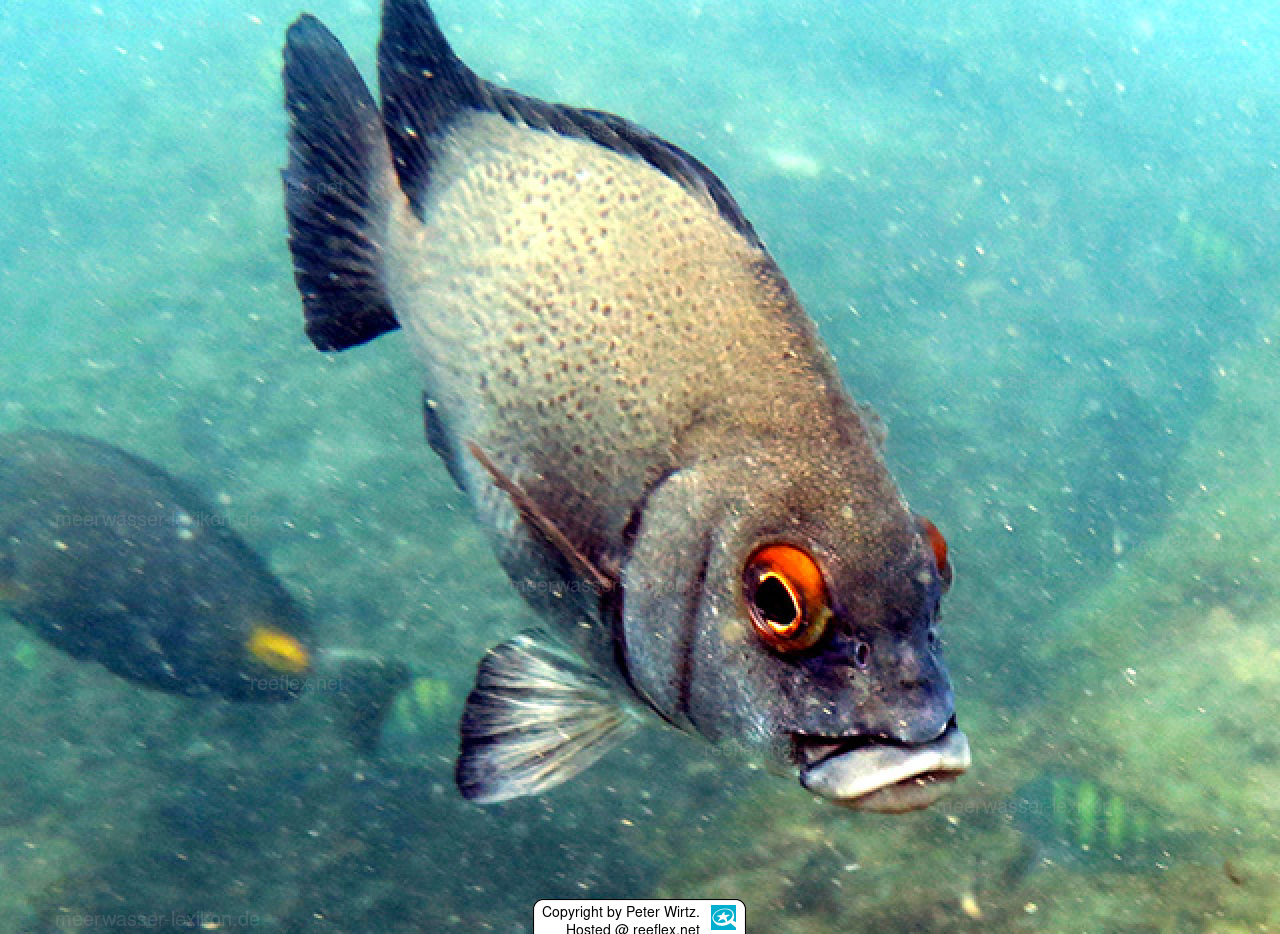Info
$ is a sweetlips of great commercial and economic interest to humans.
The species is considered endemic to the west coast of Africa in the eastern Atlantic.
There are now reports of findings from Paranaguá (Brazil), but Plectorhinchus macrolepis is not yet established there, as of 2019, see (https://www.researchgate.net/publication/335044697_Plectorhinchus_macrolepis_Actinopterygii_Haemulidae_in_the_western_Atlantic_Ocean)
The sweetlips were collected there, morphologically and genetically examined and confirmed as Plectorhinchus macrolepis.
Plectorhinchus macrolepis inhabits shallow coastal waters and invades estuaries and river courses during the juvenile phase, where sexual maturity begins.
Juveniles and subadults are often found in estuaries, lagoons and mangroves as well as in freshwater where sexual maturity begins.
Adult sweetlips live in the sea.
Synonyms:
Diagramma macrolepis Boulenger, 1899 · unaccepted
Pseudopristipoma macrolepis (Boulenger, 1899) · unaccepted
The species is considered endemic to the west coast of Africa in the eastern Atlantic.
There are now reports of findings from Paranaguá (Brazil), but Plectorhinchus macrolepis is not yet established there, as of 2019, see (https://www.researchgate.net/publication/335044697_Plectorhinchus_macrolepis_Actinopterygii_Haemulidae_in_the_western_Atlantic_Ocean)
The sweetlips were collected there, morphologically and genetically examined and confirmed as Plectorhinchus macrolepis.
Plectorhinchus macrolepis inhabits shallow coastal waters and invades estuaries and river courses during the juvenile phase, where sexual maturity begins.
Juveniles and subadults are often found in estuaries, lagoons and mangroves as well as in freshwater where sexual maturity begins.
Adult sweetlips live in the sea.
Synonyms:
Diagramma macrolepis Boulenger, 1899 · unaccepted
Pseudopristipoma macrolepis (Boulenger, 1899) · unaccepted







 Prof. Dr. Peter Wirtz, Madeira
Prof. Dr. Peter Wirtz, Madeira





























